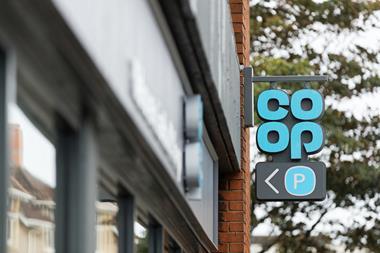It’s not just the kids who enjoy sandwiches at lunch. They are a lunchtime staple for adults, too. And in these cash-strapped times more and more people are attempting to save money by making them at home. However, British Sandwich Association (BSA) director Jim Winship says that while consumers may give the DIY approach a try, they revert to buying pre-made sandwiches after a few weeks.
“Consumers often find making lunchbox sandwiches a chore and there is more choice in pre-made sandwiches than the leftovers found in fridges,” says Winship.
He adds that of homemade sandwiches, chicken, ham and cheese are the top three fillings in British households. “Perhaps we are all a little less adventurous when it comes to making our own sandwiches, or maybe it’s because those tend to be the only ingredients we have in the fridge,” he points out.
top 10 Sandwich fillings
1 Chicken
2 Cheese
3 Ham
4 Egg
5 Prawn
6 Tuna
7 Bacon
8 Breakfast
9 Combinations
10 Other meat
Source: Kantar May 2011
Winship advises retailers looking to capitalise on customers making their sandwiches at home to cover as many bases as possible in order to keep their interest. “Most retailers will stock the top three fillings anyway, but they should make sure that they have a decent selection of other potential fillings that offers customers plenty of choice,” he says.
Research by the BSA also reveals that the traditional wedge sandwich is still the public’s favourite. More than half (58%) of all sandwiches (Kantar May 2011) are still made with standard sandwich bread. Other bread types fall in and out of favour according to trends. Both the panini and wraps have been proving very popular with consumers in the past 12 months.
The wrap market currently accounts for 5.4% of the total sandwich market (TNS Worldpanel 52 weeks ending March 20, 2011). According to Ian Job, European marketing director at Mission Foods, consumers are developing an increasing appetite for wraps as a more interesting and versatile sandwich alternative.
“Growth in the wraps sector is driven by increased consumer demands for diversity in the foods they eat and a desire for healthier eating, along with new and interesting ways to incorporate fresh, premium ingredients into their daily diet,” he says.
“With a much longer shelf life than traditional bakery products they are also extremely popular with smaller households and provide a delicious, but cost-effective lunchtime solution at a time when consumers are particularly frugal and increasingly concerned with both value and wastage.”
Not wishing to neglect the younger customers, Mission recently launched its Wheat and White Mini Wraps to the market.
“Their smaller size makes them easy for little fingers to hold and the perfect lunchbox ingredient for active kids who are also on the go,” says Job.
Their appeal isn’t limited to young children, either. “Wraps also appeal to older children who increasingly want to be more sophisticated and mature in their culinary tastes,” he states. “Tortilla wraps are perceived by children as a more modern, exciting and adult choice.”
For those who don’t have the time to prepare all of the elements of a lunchbox at home, or the inclination to do so, their local convenience store could be the place they’ll pick up everything they need for lunch. Offering a meal deal with all of the components of a lunch can be lucrative for retailers if the offering is put together correctly, points out CCE trade communications manager Selena Taylor.
top tips Best meal deal pointers
62% of lunch shoppers prefer a three item meal deal with the key elements being a lunch item (sandwich), soft drink and a savoury snack (crisps)
Maintain high visibility using pos, and clearly communicate the meal deal
Shoppers prefer juice, cola and water as the key soft drinks to go with their lunch, but providing a wide choice is key
Almost 90% of shoppers believe that meal deal items should be ranged together. Source: CCE
“Research reveals that 75% of shoppers would buy into a full meal deal, but currently 70% only buy into one lunch category, for example, sandwiches,” says Taylor. “The key reason for shoppers not buying into them is that they don’t notice them in-store, so they must be clearly communicated to be effective. Additionally, almost 90% of shoppers say meal deal items must be positioned together to further encourage purchase ideally in a dedicated meal deal bay.
“Snack, link and meal deals represent a huge opportunity for independent retailers to increase sales,” she says. “Research shows that nearly half of the population in Great Britain buy lunch on the go at least once a week, making it a fantastic opportunity for c-store owners.”
She urges retailers to hammer home their meal deal offering to their customers as it can be easily overlooked. “There are two billion out-of-home lunch occasions in Great Britain every year, so retailers should ensure that they are tapping into this incremental sales opportunity where possible,” adds Taylor. “We know that the key reason for lunch shoppers not buying into meal deals is that they simply didn’t notice one. Retailers should clearly communicate their meal deals in their store to avoid missed sales opportunities: barkers, sandwich stickers, meal deal bags and cooler headers will all help to grab shoppers’ attention.”
If retailers can highlight their lunchtime fare and provide a balance between health, convenience and price for kids’ lunches, then they’ll have the opportunity to go to the top of the class. And now is the time to do your homework.
Read more
Cash in: Lunchbox - Healthy balance
Cash in: Lunchbox - Morning rush
Cash in: Lunchbox - Need the bread
Cash in: Lunchbox - Ones to watch


























No comments yet